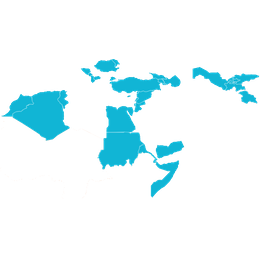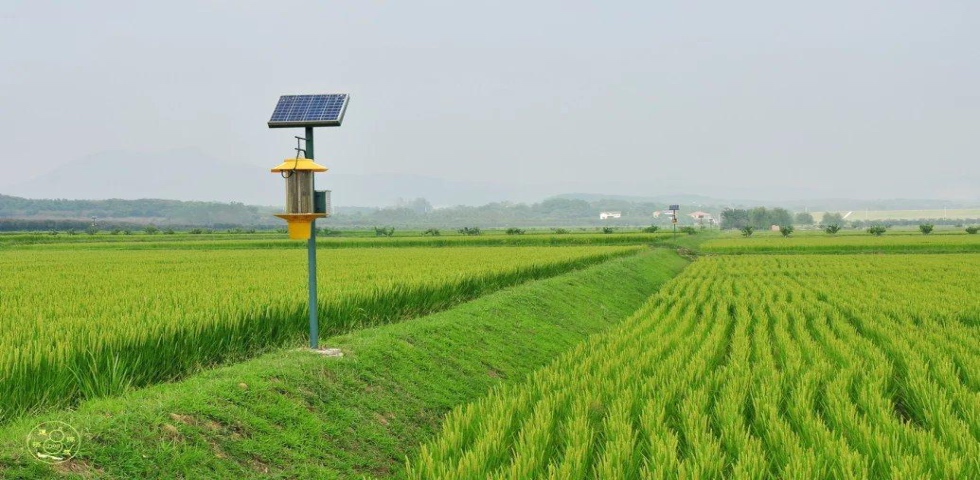Green pest control
“The systems have made it possible to achieve early pest control and reduce costs associated with prevention and monitoring.”
BACKGROUND
Pests represent a potential hazard to not only a country’s agriculture production but also that of its neighbours. Although it is important to control pests, traditional pesticides can contaminate water and cause other forms of pollution, which damage ecosystems and harm both living organisms and food safety. Therefore, proactive green solutions and better pest control data are needed to detect and contain pests while protecting the environment and promoting food security.
WHAT’S INVOLVED
Installation of suction towers: The Chinese Academy of Sciences designed a green pest control project in order to help developing countries establish pest-monitoring systems and enhance their ability to engage in green pest control. Suction towers are installed in order to monitor pests such as aphids and whiteflies, provide early detection and control, reduce pesticide consumption and control costs. They also make it possible to gather large amounts of data, which helps with biodiversity research.
Training workshops: The Chinese Academy of Sciences organized several workshops covering green pest control theory and practices.
Purchase agreements:The Chinese Academy of Sciences has connected participating farmers with relevant agricultural companies that produce the agents. The organizations purchase agricultural products at set prices from growers who meet production standards, which promotes safe and efficient production as well as helps protect farmers’ interests – a development welcomed by both groups.
EXPLORE THIS SOLUTION
This suction trap solution offers information about:
- Effective pest control systems that benefit farmers and agricultural companies, reduce chemical pesticide use and promote environmental protection.
- Recording pest-related data for research purposes
- Related training, workshops and knowledge exchange

Countries involved
China, Mongolia, Kazakhstan, Kyrgyzstan, Tajikistan
Project partners
Chinese Academy of Sciences
Project dates
2013 – present
Share this solution
Bookmark this solution
BookmarkShow Full Solution
Summary
China has developed suction trap systems to detect, monitor and control small pests such as aphids and whiteflies. These traps decrease pesticide consumption and reduce pest management costs. They can also help promote green pest management in countries participating in China’s Belt and Road Initiative. Many scientific research institutions have also purchased suction traps to easily collect large numbers of specimens for insect biodiversity research.
Challenge/Problem
Pests represent a potential hazard to not only a country’s agriculture production but also that of its neighbours. Although it is important to control pests, traditional pesticides can contaminate water and cause other forms of pollution, damaging ecosystems and harming both living organisms and food safety. Therefore, proactive green solutions and better pest control data are needed to detect and contain pests while protecting the environment and promoting food security.
Solution
Suction traps are large towers that can monitor the population dynamics of certain pests. Suction traps are internet-connected devices that would collect information and data of certain pests in the area that they cover, and system algorithm will come up with solutions or guidance to help control pests. The traps monitor large areas for extended periods of time, collecting data on pest control and insect biodiversity that can be used to make predictions in both science and agriculture. They also provide early warnings, help with pest control, reduce pesticide consumption and reduce costs. Many scientific research institutions in China and other countries have also purchased the equipment to gather data related to insect biodiversity.
After building a network of suction traps throughout China, the Chinese Academy of Sciences has designed a suction trap-based pest-monitoring system to help other developing countries better engage with green pest prevention and control. The equipment has been installed in Mongolia, Kazakhstan, Kyrgyzstan and other countries, and experts were sent to conduct training. The Chinese Academy of Sciences has also organized several workshops for professionals from other countries to learn green pest control theory and practices in China. The monitoring data from the suction traps help not only these countries but also their neighbours, which can benefit from early pest invasion warnings.
To further encourage green pest control,. the Chinese Academy of Sciences has used local companies to market biopesticides, agents that utilize pest-specific pathogens with no impact on other organisms. Natural pest control products retain their potency for only a limited period, and the window is which application is effective is narrow, so efforts have been made to plan pest control campaigns carefully and make them accurate and extensive.
Results
- The suction towers have promoted green cultivation practices, reduced pollution associated with chemical pesticides, benefitted farmers and agricultural companies, protected water and other resources and strengthened food security
- The systems have facilitated early pest control and reduced costs associated with prevention and monitoring
- Training and workshops were organized in 2018 and 2019. Scholars and experts from Mongolia, Kyrgyzstan, Tajikistan and other Belt and Road Initiative countries came to China to attend training events, and Chinese experts travelled to these countries to exchange knowledge
- From 2018 to 2019, land on which pest control was used increased from 400 hectares to 1,100 hectares, and efficacy of pest control increased from 68.5 per cent to 86 per cen
- The suction towers have recorded large amounts of data in the areas that they have been installed in
- Biopesticides can make it possible to meet organic standards. Over the last several years, the Chinese Academy of Sciences has connected participating farmers with relevant agricultural companies that produce the agents. The organizations purchase agricultural products at set prices from growers who meet production standards, which promotes safe and efficient production as well as helps protect farmers’ interests – a development welcomed by both groups.
Lessons Learned/Potential for Replication
- Science and technology research laid the foundation for developing effective suction trap systems. Promoting this technology protects ecosystems and helps with pest control research. The more the towers are used, the more the environment is protected, and the more data can be gathered
- Experts from China and Belt and Road Initiative countries formed cooperative partnerships while visiting each other and exchanging knowledge, including through training activities, conferences and workshops. These events also helped young scientists build relationships with each other
- Pest management campaigns should be organized in a careful and comprehensive manner since biopesticides are only potent for a limited period of time and the windows for effective application are short. The Chinese Academy of Sciences worked with farmers and cooperatives to maximize pest control efficacy and efficiency.
Next Steps
The Chinese Academy of Sciences has been making technical improvements and exploring various promotion models to spread products and technologies for green pest control. The organization hopes that its efforts will make it possible to reduce environmental damage caused by chemicals while improving the quality of agricultural products and increasing their added value – benefiting society by enabling farmers and small businesses to see tangible economic gains.
Last update: 28/06/2021


